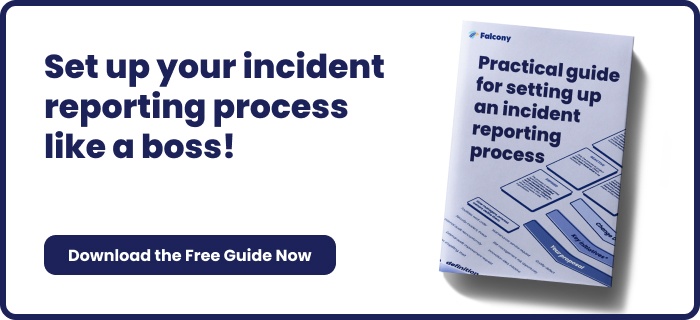5 Tips For Creating Great Checklists
This is an updated version of a blog post originally published in May 2016.
In the process of working together with our clients, we have seen numerous great checklists from various functions and industries. Although the context varies, they all have something in common. In this blog post, we will go into more detail and reveal five focal points of a great checklist. The same principles apply to audits, inspections, assessments and checks.
How to create a great checklist?
1. Structure it logically
A good quality checklist guides the user. The questions are in a logical order. For instance, if a person is going through several spaces, the questions are grouped in the order of the spaces. A logical checklist is well divided into separate sections, presents logical sets of questions and is intuitive to use.
2. Make questions simple and unbiased
Every question in a checklist needs to be understood by its user. A question like “on a scale from 1-5, how clean was the room” is not only biased but also rather uninformative. A much better way is to ask specific questions such as “is the floor washed” or “is the bed made”. Questions with answering options “good”, “satisfactory”, “bad” etc. are always responded to from a subjective point of view. But “are the doors locked” has only two possible objective answers. So always keep the questions unambiguous.
3. Clarify the objective
What is the measurable result or other information that the checklist should produce? Clarify the goal. Is the objective to improve safety? Or is it to gain more information about customer satisfaction? When the objective is clear, the questions become meaningful and useful, and the checklist is not filled in only for the sake of some random data collection.
4. Provide help and guidance
Add helpful tips and examples to the checklist. Make sure that if pictures are needed, you mention them in the help text. An example of a good answer is also a useful idea. Keep the help text short but informative. Nobody wants to read a novel when going through a checklist yet it has to be made sure that the questions are fully understood.
5. Emphasise the right questions
There are no dumb questions, but all questions are not equally important. So make sure you know which questions are the ones serving the core objective and emphasise them. For instance, information about the cleanliness of a reception area is much more important from the customer satisfaction perspective than the cleanliness of a stock room, although both questions might exist in the same checklist. With the right emphasis, the right information can be gathered to promote better data-driven decision-making.
Final Thoughts
Great checklists only provide the information that is actually needed. Why? Because nobody wants useless data or to waste time on ambiguous questions.
By having a clear objective, logical structure and self-explanatory questions, you are making sure that your checklists have a solid foundation. Adding help and guidance into the mix will ensure that the quality of the collected data is on par with expectations. And by emphasising the right questions, you are able to highlight the 20% of causes that factor for 80% of consequences, resulting in better data-driven decision-making!
Once you have nailed the content of your checklists, it is time to think about the optimal way to conduct, share, manage and analyse them. Modern web applications have a lot of benefits when compared to traditional pen-and-paper checklists, Word documents or Excel spreadsheets. Test our platform FREE for 30 days and experience the difference yourself:
We are building the world's first operational involvement platform. Our mission is to make the process of finding, sharing, fixing and learning from issues and observations as easy as thinking about them and as rewarding as being remembered for them.
By doing this, we are making work more meaningful for all parties involved.
More information at falcony.io.

Related posts
A Look at 11 Common Checklists in Logistics Operations
In logistics, meticulous planning and organization are essential to ensure smooth operations and...
Ten Different Checklists Used in the Chemical sector
Checklists are indispensable tools in the chemical and petrochemical industry for ensuring...
9 Widely Used Checklists in Manufacturing
Checklists are invaluable tools in manufacturing, serving as systematic guides to ensure that tasks...





